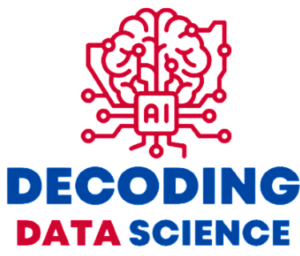If you are familiar with statistics, then you may have heard of the term “Z-score”. But what exactly is a Z-score, and how is it calculated? In this article, we will cover everything you need to know about Z-score statistics. We will discuss what a Z-score is, how to calculate it, and what it is used for. So, let’s get started!
What is a Z-Score?
A Z-score, also known as a standard score, is a statistical measurement that represents the number of standard deviations a data point is from the mean. In other words, it measures how far a data point is from the average of the dataset in terms of standard deviation. A Z-score can be positive or negative, indicating whether the data point is above or below the mean.
How to Calculate Z-Score
To calculate the Z-score of a data point, you need to know the mean and standard deviation of the dataset. The formula for calculating Z-score is as follows:
z = (x - μ) / σ
Where:
- z = Z-score
- x = The data point you want to calculate the Z-score for
- μ = The mean of the dataset
- σ = The standard deviation of the dataset
Using Z-Score in Statistics
Z-score is a powerful statistical tool that can be used for a variety of purposes. Here are some common applications of Z-score in statistics:
- Outlier Detection
An outlier is a data point that is significantly different from other data points in the dataset. Z-score can be used to identify outliers by calculating the Z-score of each data point and flagging those that fall outside a certain threshold.
- Normal Distribution
Z-score is used to standardize data to a normal distribution with a mean of 0 and a standard deviation of 1. This makes it easier to compare data across different datasets.
- Hypothesis Testing
Z-score is used in hypothesis testing to determine whether a data point is statistically significant. A data point with a Z-score above a certain threshold is considered statistically significant.
- Confidence Intervals
Z-score can be used to calculate confidence intervals, which are used to estimate the range of values that a population parameter can take.
Interpretation of Z-Score
The interpretation of a Z-score depends on its value. Here are some general guidelines for interpreting Z-score:
- A Z-score of 0 means the data point is equal to the mean.
- A positive Z-score means the data point is above the mean.
- A negative Z-score means the data point is below the mean.
- The further a Z-score is from 0, the more significant the data point is.
Limitations of Z-Score
While Z-score is a powerful statistical tool, it has some limitations. Here are some limitations of Z-score:
- Normality Assumption
Z-score assumes that the data is normally distributed. If the data is not normally distributed, then Z-score may not be an appropriate measure of standardization.
- Outlier Sensitivity
Z-score is sensitive to outliers. A single outlier can significantly affect the mean and standard deviation of the dataset, which in turn affects the Z-score of each data point.
Conclusion
In summary, Z-score is a statistical measurement that represents the number of standard deviations a data point is from the mean. It is a powerful tool that can be used for outlier detection, normal distribution, hypothesis testing, and confidence intervals. However, Z-score has some limitations, including the normality assumption and outlier sensitivity. Understanding the basics of Z-score is crucial for anyone working with statistics.
If you want to learn more about statistical analysis, including central tendency measures, check out our comprehensive statistical course. Our course provides a hands-on learning experience that covers all the essential statistical concepts and tools, empowering you to analyze complex data with confidence. With practical examples and interactive exercises, you’ll gain the skills you need to succeed in your statistical analysis endeavors. Enroll now and take your statistical knowledge to the next level!
If you’re looking to jumpstart your career as a data analyst, consider enrolling in our comprehensive Data Analyst Bootcamp with Internship program. Our program provides you with the skills and experience necessary to succeed in today’s data-driven world. You’ll learn the fundamentals of statistical analysis, as well as how to use tools such as SQL, Python, Excel, and PowerBI to analyze and visualize data designed by Mohammad Arshad, 18 years of Data Science & AI Experience.. But that’s not all – our program also includes a 3-month internship with us where you can showcase your Capstone Project.
